Are Great Pyrenees Good Service Dogs: Why the Pyr Is an Ideal Service Dog
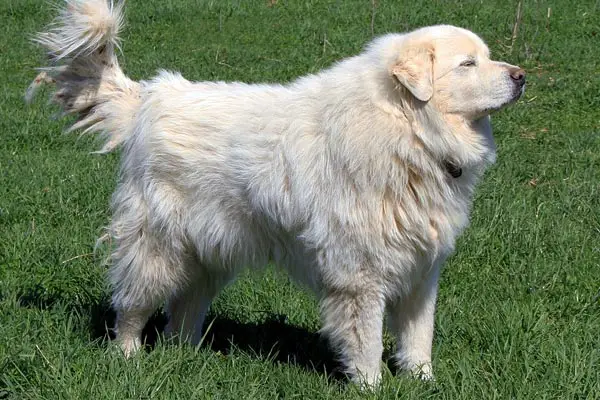
The Great Pyrenees dog breed is a giant, beautiful dog that knows their own power and uses it with wisdom and care.
This dog breed comes from an ancient and noble lineage of working dogs, serving alongside people to protect livestock animals in harsh and wild terrain.
Today, the Great Pyrenees is still a popular breed choice for many service dog and therapy dog roles. They have the personality and temperament to do well-serving adults, the elderly, and children.
In this article, find out what you need to know if you are considering choosing the Great Pyrenees for your service dog.
Are Great Pyrenees Good Service Dogs?
The Great Pyrenees dog breed is a working dog breed right down to its core. These dogs make great service dogs and therapy dogs. With their famously calm, patient, and gentle personalities, the Great Pyrenees breed has an estimated 11,000 years of working and serving alongside people in protection and serving roles.
In short, it would be hard to visualize a more perfect choice for a service dog than the Great Pyrenees.
Meet Winston, a Great Pyrenees, and a Certified Therapy Dog
This heart-warming news video showcases just how amazing a Great Pyrenees dog can be in service and therapy work.
As you learn while watching the video, Winston isn’t the first Great Pyrenees the owner has trained to work as a therapy dog.
Great Pyrenees dogs can be equally great in other types of service work, from serving as guide dogs to the blind to being search and rescue dogs and individual service dogs to people.
Why the Great Pyrenees Makes Such An Exceptional Therapy Dog
The National Pyr Rescue charity makes it clear that Winston, the Great Pyrenees dog you just met, is definitely not an exception within the breed.
Rather, Winston is the rule.
Described as gentle and beautiful, wise, and calm, the Great Pyrenees often seem born to fill the role of service and therapy dog to people.
As the National Pyr Rescue charity points out, while the Great Pyrenees is definitely an enormous dog breed, when you are seated on a chair or in a wheelchair, their great height often seems to make them just the perfect height to pat!
Also, Great Pyrenees are such massive and beautiful dogs that they naturally encourage interaction among people who don’t know each other. In this way, they make it easy to offer comfort to people in difficult situations who might otherwise not ask for it.
Do the Great Pyrenees Make Good Individual Service Dogs?
Of course, serving as a therapy dog in a group setting is not exactly the same as serving in a service dog role to a single person.
A quick search online will showcase that not everyone believes the Great Pyrenees is an ideal pick for an individual service dog role.
Here, it is important to remember that there is more to choosing a service dog than just the baseline dog breed. It is important to find the right breed match for the person and to provide the right training for the job that needs doing.
Thundering Pyrs breeder and kennel recounts their experience training no less than five Great Pyrenees service dogs to date.
The breeder explains that Great Pyrenees dogs are smart and very trainable starting from a very young age. She has used her five Great Pyrenees to help manage her balance, mobility, and blood sugar issues with excellent results.
With the right breed to owner match and appropriate training, it is clear that the Great Pyrenees can make an excellent service dog choice.
Unique Ways That Great Pyrenees Service Dogs Are Helping People
The Great Pyrenees is known to be an independent thinker, according to the American Kennel Club (AKC) breed profile.
This is not the typical breed profile of a dog you would choose to do service dog work.
However, there are some situations where you do not want a dog that follows orders without question, such as Science Alert’s high-scoring “smartest dog breeds,” the Labrador Retriever and Golden Retriever, both popular service dog breed choices.
Instead, you want a service dog that can take a step back and independently assess the threat and make their own decision about how to protect their person from potential danger.
The Great Pyrenees comes from an 11,000-year lineage of dogs tasked with protecting livestock herds from fearsome predators in remote locations. These dogs worked alongside people but often at great distances.
If a predator, such as a wolf or a hyena, was threatening a wandering sheep, the Great Pyrenees would not necessarily have a human partner to look to for guidance about what to do. The dog would just have to act – and act fast – to save the sheep’s life.
In some service dog roles, this is exactly the type of canine intelligence that will best serve the person who needs a service dog.
Great Pyrenees service dog to the boy with autism and elopement disorder
As Best Friends Animals Society recounts, a Great Pyrenees rescue dog named Wash has saved a little boy’s life on countless occasions.
The boy has autism and elopement disorder, a disorder that can cause the child to wander away from the safety of familiar surroundings and into danger.
Wash is tasked with keeping the boy safe no matter what. This often means reacting at the moment to an unfolding situation that only Wash can sense.
Great Pyrenees service dog to Army veteran with PTSD
As the American Kennel Club (AKC) shares, a Great Pyrenees dog named Gunner has helped a military veteran suffering from post-traumatic stress disorder (PTSD) to turn around and help others obtain a service dog.
Gunner joined the family when it became clear that Hamilton Kinard, his human partner, had extensive nerve damage that would impact his mobility as well as his issues with PTSD.
Gunner is strong enough to literally pull Hamilton’s wheelchair when the need arises. Gunner also acts as a canine “cane” and support when Hamilton cannot stand or move about on his own.
Amazingly, Gunner also provides support to Hamilton and wife Britnee’s young son, Blayne, who has been diagnosed with autism.
Gunner provides both anxiety relief and mobility assistance as well as serving in any role where he senses he is needed.
Great Pyrenees Qualities That Make Them Exceptional Service Dogs
As the Appalachian Great Pyrenees Rescue charity points out, the Great Pyrenees dog breed has a number of qualities that can set them up for success in a service dog role.
Strong and powerful
The first quality that the Great Pyrenees has in spades is how strong and powerful these dogs are. According to the American Kennel Club (AKC), the Great Pyrenees can easily weigh 85 to 100+ pounds in adulthood.
This is a dog that won’t falter if their human needs to literally lean on them or even fall on them for emergency support.
This may be why so many of the service dog examples you have read about so far in this article highlight the Great Pyrenees’ ability to provide mobility support.
Naturally gentle and kind
With great physical strength and might comes great responsibility not to misuse it and the Great Pyrenees is a dog that seems to get this instinctively.
These dogs are a popular choice for family guard dogs and protection dogs for exactly this reason. They are famously gentle and kind and will happily tolerate all kinds of handling from people of all ages without complaint.
Protective and loyal
The Great Pyrenees dogs’ patient, docile nature may seem at odds with their native role defending flocks of wildlife against predators, but the Great Pyrenees are also perfectly willing to use their strength and might if the situation calls for it.
These dogs will quickly alert their people if there are any threats looming and will naturally insert themselves in between the perceived threat and their charge to provide a defense.
This can be especially important if the Great Pyrenees is serving a very young, elderly, or mobility impaired individual who cannot accurately perceive impending threats or defend themselves adequately.
Smart and trainable
Earlier in this article, we talked about the Great Pyrenees dog’s unique brand of smarts. These dogs are smart enough to keep their own counsel in rapidly evolving situations where there is no human being to look to for direction.
In the wrong hands, this can look like willful disobedience or even canine stupidity. The great Pyrenees can present some challenges in the traditional dog obedience model because of this.
These dogs are also far too physically strong and powerful to respond favorably to the old-school model of negative reinforcement (punishment-based) dog training. They may not respond with overt aggression, but passive resistance is still resistance.
As long as you understand that the Great Pyrenees has been deliberately bred down through the centuries to guard, protect and care for vulnerable animals independently of human guidance, you will likely get good results training a Pyr as a service dog.
3 Steps to Training a Great Pyrenees As Your Service Dog
The human-service dog bond is very individual and unique. No two teams will ever be exactly alike.
This means that choosing your service dog has to extend beyond questions of breed aptitude or intelligence and look at the individual dog and the individual person.
This is also why, even though some people say the Great Pyrenees can “never be” a good service dog, there are so many true stories showing that just the opposite is the truth.
1. First, evaluate what you need your service dog to help you with
For the best results, the process of selecting a service dog – regardless of breed – always starts with evaluating exactly what you need your service dog to do.
For example (and these are just general examples), you might need your service dog to calm you when you are anxious, provide “herding” when you are tempted to isolate or wander away and help you maintain personal space before people get too close.
2. Next, consider which dog breeds have the right traits to be a potential fit
The examples you read about here earlier all emphasize certain traits that the Great Pyrenees have in abundance: natural physical strength, gentleness, independent thinking, and protective instincts.
Your list of potential dog breeds might have 20 or 10 or two dog breeds on it. But this will help you narrow down your search without limiting yourself so much you feel like you will never find the right dog.
3. Finally, find the right service dog training program for you and your new dog
Once you identify the right dog breed and then find the right individual dog, this final step is actually the easiest step in the process.
Because the truth is, there are many service dog training programs available today. But there is no one single “right” service dog training course for every human-dog team.
You may even need to hire a professional dog trainer to customize a training program just for you and your dog’s unique needs, which is actually ideal.
All that matters is that you are clear about what you need your service dog to do and your dog trainer can help you and your dog learn to work together to get your needs met.
All over the world, Great Pyrenees dogs are serving in official and unofficial ways to support, protect, love, and serve their people. This is a breed that adores people of all ages and stages of life and loves to be loved – and it shows.
When you choose the Great Pyrenees to be your service dog, you will get physical as well as mental and emotional support from a dog that lives to serve.
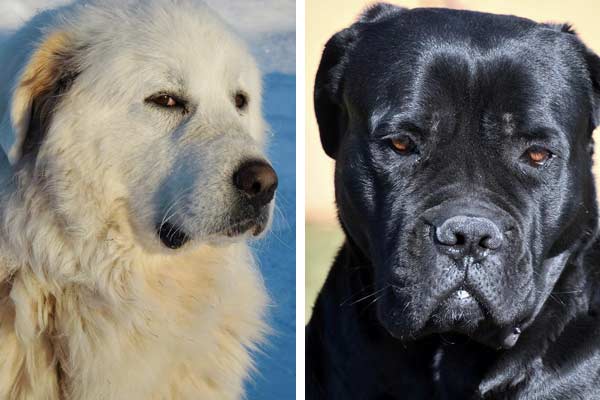
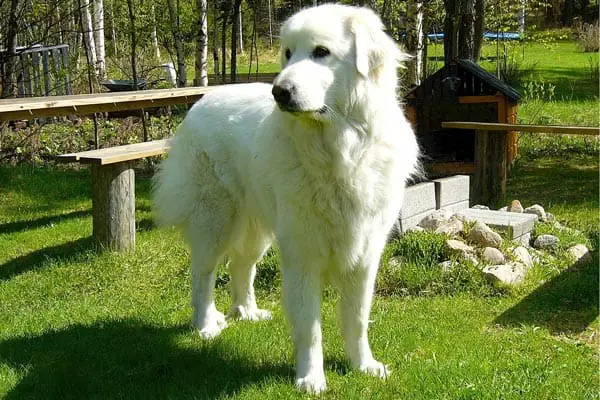
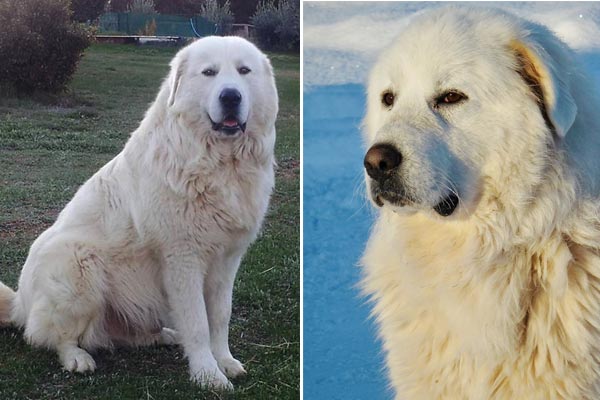
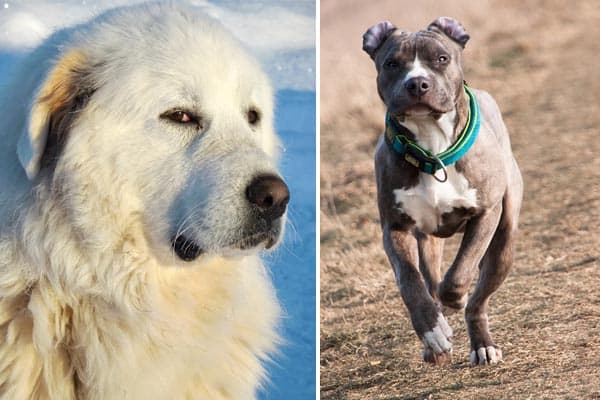
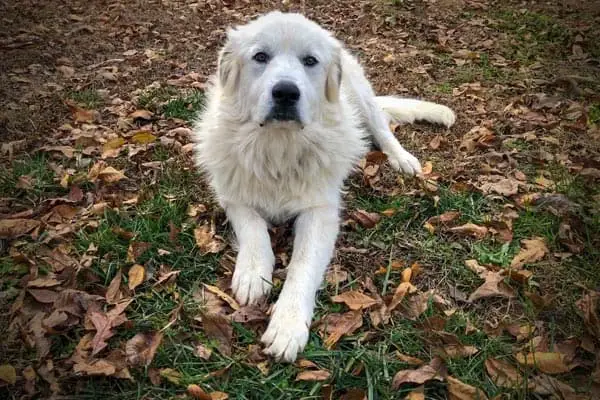
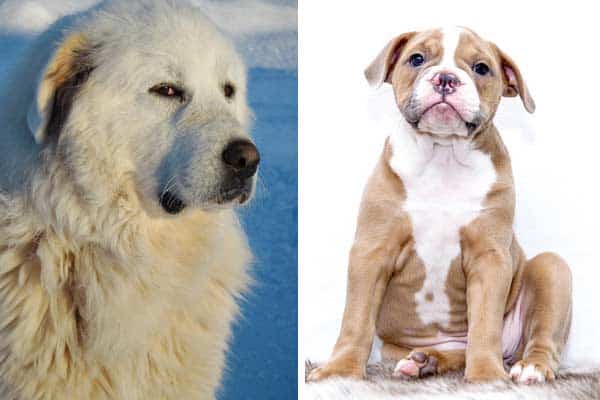

I have three GP under 2years. I would very much like a service dog (not a support animal). I am a disabled veteran. I ask for assistance in finding the right training program and how to determine which of my three is the right choice. I would pick any of the three for different reasons. All adore me and me them.